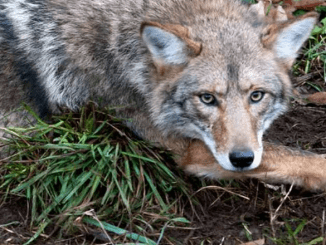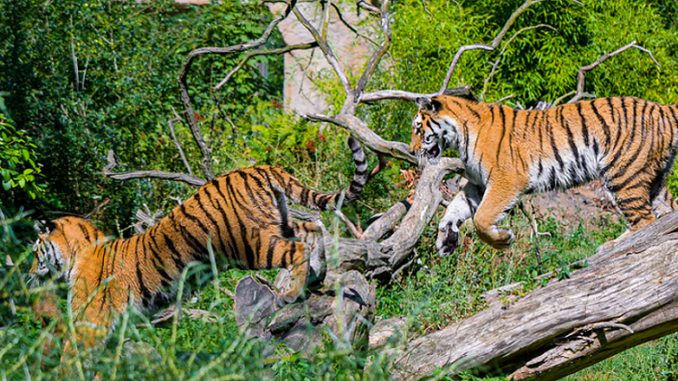
GLAND, Switzerland, September 1, 2022 (ENS) – The migratory monarch butterfly, known for its unique annual journey of up to 4,000 kilometers (2,485 miles) across the Americas, has entered the IUCN Red List of Threatened Species as Endangered, beset by habitat destruction and climate change.
The latest update of the IUCN Red List of Threatened Species™, a global database that now includes 147,517 species, shows that the butterfly is just one of the 41,459 species that are threatened with extinction.
All surviving sturgeon species, also migratory, found across the northern hemisphere, are now at risk of extinction due to dams and poaching, pushing the world’s most Critically Endangered group of animals closer to the brink.
The tiger (Panthera tigris) has been reassessed, revealing new, increasing population figures.
“Today’s Red List update highlights the fragility of nature’s wonders, such as the unique spectacle of monarch butterflies migrating across thousands of kilometres,” said IUCN Director General Dr. Bruno Oberle.
“To preserve the rich diversity of nature we need effective, fairly governed protected and conserved areas, alongside decisive action to tackle climate change and restore ecosystems,” Oberle said. “In turn, conserving biodiversity supports communities by providing essential services such as food, water and sustainable jobs.”
Monarchs Struck Down By Climate Change
The Endangered migratory monarch butterfly, known for its migrations from Mexico and California in the winter to summer breeding grounds throughout the United States and Canada, has shrunk by between 22 percent and 72 percent over the past decade.
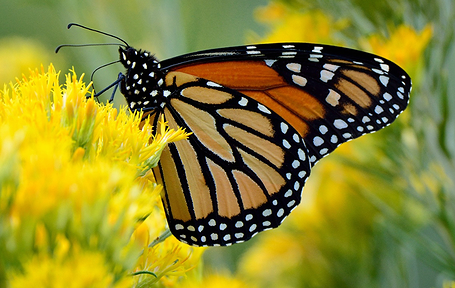
Legal and illegal logging and deforestation to make space for agriculture and urban development has already destroyed substantial stretches of the butterflies’ wintering spots in Mexico and California.
Pesticides and herbicides used in intensive agriculture across its range kill the migratory monarchs and the milkweed their larvae need to feed on.
“Few species evoke the awe and wonder that the migratory monarch butterfly commands,” said Dr. Sean T. O’Brien, President and CEO of Nature Serve. “While efforts to protect this species are encouraging, much is still needed to ensure its long-term survival. Never has there been a more pressing time to collect data, like that provided by the NatureServe Network, on our nation’s biodiversity.”
Climate change has impacted the migratory monarch butterfly and is a fast-growing threat. Drought limits the growth of milkweed and increases the frequency of catastrophic wildfires, temperature extremes trigger earlier migrations before milkweed is available, while severe weather linked to climate change has killed millions of butterflies.
The western population is at greatest risk of extinction, having declined by an estimated 99.9 percent, from as many as 10 million to 1,914 butterflies between the 1980s and 2021. The larger eastern population also shrunk by 84 percent from 1996 to 2014. Concern remains as to whether enough butterflies survive to maintain the populations and prevent extinction.
Anna Walker, who led the monarch butterfly assessment, is member of the IUCN Species Specialist Committee’s Butterfly and Moth Specialist Group. She also serves as species survival officer at the New Mexico BioPark Society, a zoo, botannic garden, beach, and aquarium in Albuquerque.
“It is difficult to watch monarch butterflies and their extraordinary migration teeter on the edge of collapse, but there are signs of hope. So many people and organizations have come together to try and protect this butterfly and its habitats. From planting native milkweed and reducing pesticide use to supporting the protection of overwintering sites and contributing to community science, we all have a role to play in making sure this iconic insect makes a full recovery,” Walker said.
All Sturgeon Species At Risk of Extinction
The latest global sturgeon reassessment finds that 100 percent of the world’s remaining 26 sturgeon species are now at risk of extinction, up from 85 percent in 2009. The assessments are based on refined calculations that show their decline over the past three generations to be steeper than previously thought.
The Yangtze Sturgeon (Acipenser dabryanus) has moved from Critically Endangered to Extinct in the Wild. The IUCN Red List classifies 17 sturgeon species as Critically Endangered, three as Endangered and five as Vulnerable.
The reassessment has also confirmed the extinction of the Chinese Paddlefish (Psephurus gladius).
Giant Beluga Sturgeons Critically Endangered
Now found in the Caspian and Black Sea basins, and formerly also in the Adriatic Sea, the Critically Endangered Beluga (Huso huso) sturgeon grows up to eight meters (26 feet) and 1,700 kilograms (3,747 pounds). These huge sturgeons have been overfished for their meat and caviar for centuries.
“The oldest reported beluga was 118 years old. They reach reproductive age at 2 m in length, about one fourth of their maximum size,” Dr. Jon Paul Rodríguez, who chairs the IUCN Species Survival Commission, said.
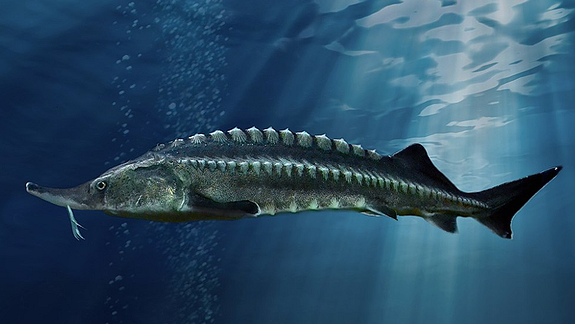
“The primary threat of these giant migratory fish is overexploitation. Freshwater ecosystems are among the most threatened in the world, as we not only use water to drink, clean, irrigate and fish, but also to dispose of our waste,” he said.
Despite being protected under international law, poaching continues to affect more than half of these species; stronger enforcement of regulations on the illegal sale of sturgeon meat and caviar is critical to stop further declines, the IUCN warns.
Dams affect all sturgeon species migrating to their breeding grounds, while rivers warming due to climate change further disrupts sturgeon reproduction. Freshwater ecosystem restoration and building effective fish passages, together with restocking, which has already proven effective for species such as the Critically Endangered Adriatic sturgeon (Acipenser naccarii), are key measures to support the long-term survival of the world’s sturgeons.
Tiger Numbers Increasing
The tiger has been reassessed, with new figures revealing that there are currently between 3,726 and 5,578 tigers in the wild worldwide. The 40 percent increase since the last tiger assessment in 2015 is the result of improvements in monitoring, showing that there are more tigers than previously thought, and the number of tigers globally appears to be stable or increasing.
While this reassessment confirms that the tiger remains Endangered on the IUCN Red List, the population trend indicates that projects such as the IUCN Integrated Tiger Habitat Conservation Programme are succeeding and recovery is possible as long as conservation efforts continue.
Major threats include poaching of tigers, poaching and hunting of their prey, and habitat fragmentation and destruction due to the growing pressures of agriculture and human settlement. Expanding and connecting protected areas, ensuring they are effectively managed, and working with local communities living in and around tiger habitats, all are critical to protect the species.
“Tiger population recovery,” Dr. Rodriguez said, “shows us that solving complex conservation challenges is possible, and within our reach. Although tigers are still Endangered, their populations appear to be stable or increasing. We need to learn from these conservation successes, share them with the public, and increase our investment in evidence-based conservation action.”
“The diversity of freshwater species underpins the health of our freshwater ecosystems and our planet as a whole,” said Harmony Patricio, freshwater fish conservation manager with the nonprofit Re:wild. “The news out today on the status of the world’s sturgeons should act as a red alert about the declining health of the lakes and rivers sturgeons live in. Re:wild is proud to be working with Synchronicity Earth via Shoal on urgently bolstering the conservation of freshwater species throughout the world, to the benefit of all life on Earth.”
Stopping the Surge in Species Extinctions
Many groups are getting involved in wildlife protection, moved by the urgent necessity to stem the surge of species extinctions.
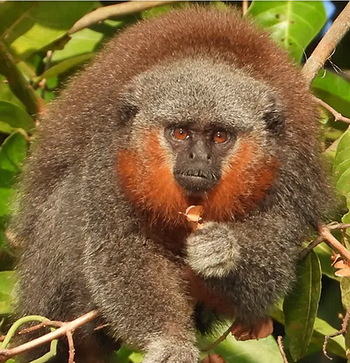
Just four years after researchers identified the Mato Grosso titi monkey, also called the Groves’ titi monkey, as a separate species, the small monkey has been named one of the 25 most endangered primates in the world in a new report, “Primates in Peril 2022-2023,” launched August 30 at the 19th Congress of the Brazilian Society of Primatology, in Sinop, Mato Grosso, Brazil.
The titi monkey is one of four species on the list from Brazil, which is inhabited by more primate species than any other country in the world.
The Critically Endangered Mato Grosso titi monkey was described in 2019 by a group of researchers including Re:wild’s Chief Conservation Officer Russ Mittermeier and Primate Conservation Director Anthony Rylands.
The small monkeys live in the Brazilian Amazon and in the region where the Amazon overlaps with the Brazilian Cerrado ecosystem – one of the planet’s most threatened biodiversity hotspots. This species is monogamous; the pairs perform duets and intertwine their tails when they are together, and the males provide much of the infant care.
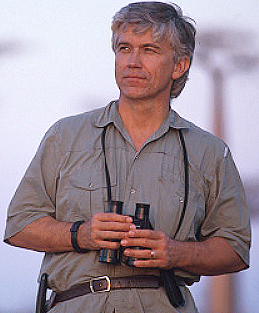
The biennial “Primates in Peril” report, a collaborative effort of the IUCN SSC Primate Specialist Group, the International Primatological Society, and Re:wild, outlines the 25 most endangered primates based on the “passionate nominations of primate champions” from Africa, Madagascar, Asia and the Neotropics. Primates are not only monkeys but also apes, lemurs, lorises, galagos, and tarsiers.
With 43 percent of the world’s primates classified as Critically Endangered or Endangered by the IUCN Red List of Threatened Species, the primates listed in the ‘Primates in Peril’ report are those most in need of conservation action.
The 2022-2023 list includes six primate species from Africa, four from Madagascar, eight from Asia, and seven from the Neotropics. Eight species are on the list for the first time.
“Just because a primate ends up on the ‘Primates in Peril’ list doesn’t mean that the situation is hopeless,” said Mittermeier, who chairs the IUCN SSC Primate Specialist Group. “In fact, our goal with the report is to highlight those species, like the Mato Grosso titi monkey, where there are conservation opportunities. We hope this report helps spur the necessary resources, research and political will to reverse the decline of these species, those they share their home with, the ecosystems in which they live, and the health of the planet overall.”
Major Wildlife Conference Set for December
After several pandemic-related postponements, from December 7 – 19, 2022 in Montreal, Canada, governments from around the world will come together to agree on a new set of goals to guide global actions through 2040 to protect and restore nature. Attendees at the UN Biodiversity Conference (COP 15) are expected to adopt an all-inclusive Post-2020 Global Biodiversity Framework – a 10-year strategy to engage the entire world in the task of protecting nature and building a future of life in harmony with nature.
The draft Post-2020 Global Biodiversity Framework has 21 action targets for 2030, including:
- – Conservation of at least 30 percent of land and sea areas globally.
- Restoration of at least 20 percent of degraded freshwater, marine and terrestrial ecosystems.
- 50 percent greater reduction in the rate of introduction of invasive alien species.
- Reduce nutrients lost to the environment by at least half, and pesticides by at least two thirds, and eliminating discharge of plastic waste.
- Nature-based contributions to global climate change mitigation efforts of at least 10 gigatonnes of carbon dioxide equivalent per year.
Red List assessments are constantly being compiled and submitted for publication on the IUCN Red List of Threatened Species, and the underlying database is constantly expanding and changing as new species are brought in and existing species undergo taxonomic revisions. To ensure a regular flow of assessments on to the website, The IUCN Red List is updated at least twice each year. The next update is scheduled for December 8, 2022.
Featured image: Siberian tigers at Tierpark Zoo in Berlin, Germany. August 13, 2022 (Photo by Mathias Appel) Globally, there are more tigers in captivity than in the wild. Captive tigers in private hands in the United States alone are estimated at 5,000. In tiger farms across China, Laos, Thailand, and Vietnam there are thought to be over 8,000 more.



